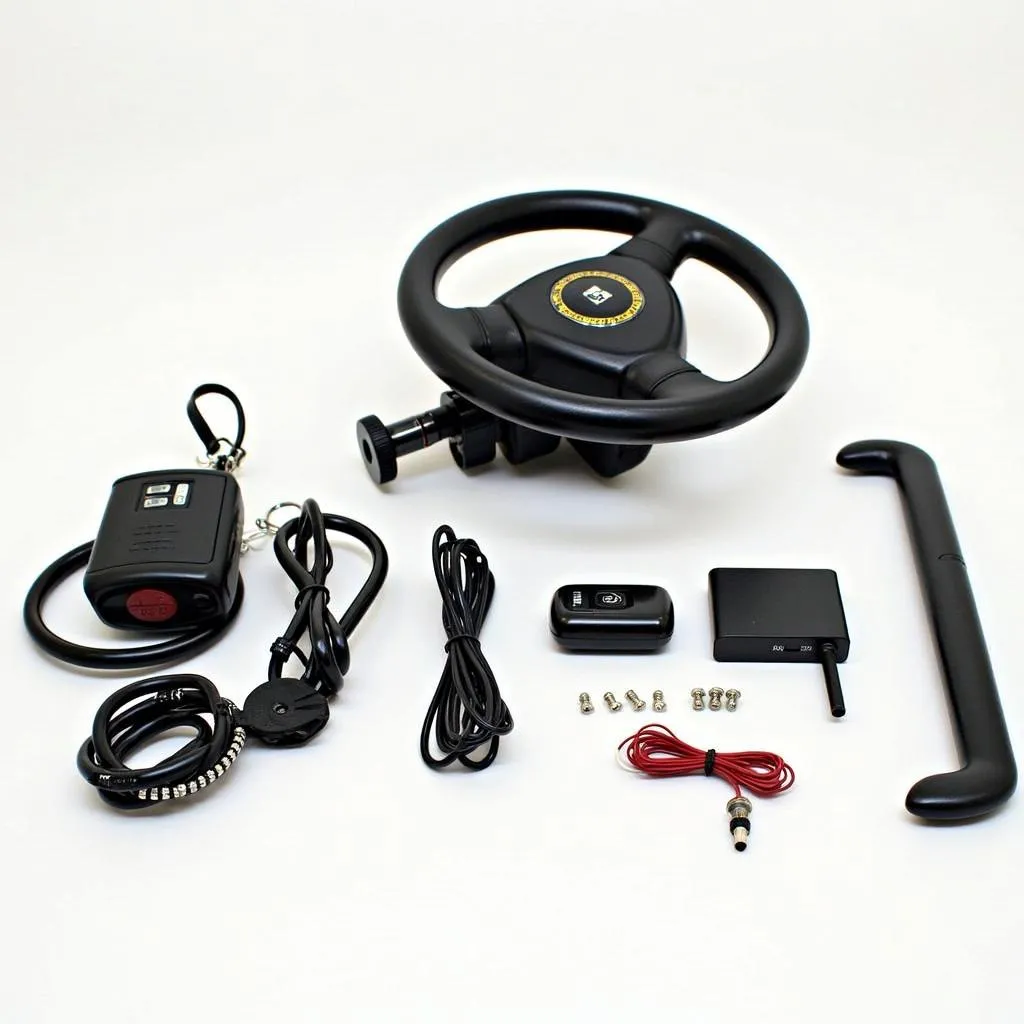Getting your car insured is essential, but the costs can add up. Luckily, many insurance companies offer discounts for vehicles equipped with anti-theft devices. Knowing how to classify your device can save you money and simplify the insurance process. Let’s break down how to determine your anti-theft device type and secure those valuable discounts.
Understanding Anti-theft Device Categories
Insurance companies typically categorize anti-theft devices into different tiers based on their level of sophistication and effectiveness. Understanding these categories is crucial to accurately represent your vehicle’s security features. Here’s a general breakdown:
1. Basic Security Features:
These are standard in many modern vehicles and often include:
- Factory-Installed Alarms: These systems usually trigger an audible alarm if someone tries to enter your car without a key.
- Immobilizers: This technology prevents the engine from starting without the presence of the correct key.
- Steering Wheel Locks: A visible deterrent that physically prevents the steering wheel from being turned.
2. Advanced Anti-theft Systems:
These systems offer a higher level of protection and might include:
- GPS Tracking: Allows you and/or law enforcement to track your vehicle’s location in case of theft.
- Remote Kill Switch: Enables you to remotely disable your vehicle’s engine.
- Vehicle Recovery Systems: These systems work with law enforcement to help recover your car if it’s stolen. Some examples include LoJack or OnStar.
3. Aftermarket Security Add-ons:
These are devices installed after you purchase the vehicle, further enhancing security:
- Aftermarket Alarms: These might offer additional features like smartphone connectivity or shock sensors.
- Kill Switches: An aftermarket switch installed to interrupt the vehicle’s electrical system.
- Brake Pedal Locks: A physical deterrent that makes it difficult to steal the vehicle.
 Car anti-theft devices
Car anti-theft devices
Finding and Classifying Your Device
1. Check Your Owner’s Manual:
Your owner’s manual is the best place to start. It should list all factory-installed security features.
2. Look for Visual Clues:
Visible deterrents like steering wheel locks are easy to identify. Also, check your dashboard or near your rearview mirror for alarm system indicators.
3. Contact Your Dealership or Manufacturer:
If you’re unsure about a specific feature, your dealership or manufacturer can provide clarification.
4. Consult Your Insurance Provider:
Insurance companies often have their own specific classifications. Provide them with details about your vehicle’s make, model, and any known anti-theft features. They can guide you on the appropriate classification for discounts.
Maximize Your Savings
- Document Everything: Keep records of your anti-theft devices, including installation receipts, product information, and any confirmation from your dealership.
- Negotiate with Your Insurer: Don’t be afraid to negotiate your insurance premium. Having a clear understanding of your device classifications can strengthen your position.
 Car insurance policy
Car insurance policy
Frequently Asked Questions
Q: Does my car insurance automatically apply discounts for anti-theft devices?
A: Not necessarily. While some insurance companies might automatically factor in standard safety features, it’s crucial to inform them about any additional anti-theft devices to ensure you receive the appropriate discounts.
Q: What if my anti-theft device isn’t listed in their categories?
A: Contact your insurance provider directly. They can guide you on how they classify your specific device and whether it qualifies for a discount.
Q: Can aftermarket devices impact my car’s warranty?
A: It’s possible. Always have aftermarket devices installed by a reputable professional and verify with your dealership or manufacturer to ensure it won’t affect your warranty.
Need Help with Your Vehicle Diagnostics?
For those seeking advanced diagnostics and software solutions for their vehicles, explore the range of professional tools offered by CARDIAGTECH. Their cutting-edge technology can help identify and address various automotive issues, ensuring your car performs at its best.
By understanding how to classify your car’s anti-theft devices, you can take advantage of potential insurance discounts and enjoy greater peace of mind knowing your vehicle is well-protected. Remember to contact your insurance provider for specific details on their discount policies and classification systems.


